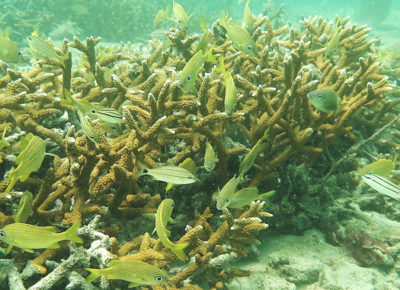Due to soaring temperatures, tropical coral reefs are facing a bleak future. But recent research shows that some of these corals are migrating to cooler subtropical seas, offering a measure of hope that these ecosystems can survive the existential threat of climate change.
From the shores of Florida to the islands of Japan, from the Midway atoll to southern Australia, an unheralded ecological regeneration may be underway. Reef-building coral, which has become ever more threatened in the superheated waters of the tropics, is making a bid for survival by migrating to subtropical climes that meet its temperature requirements.
The coral reefs of the tropics have looked doomed. Bleached by marine heatwaves, suffering mass die-offs, and stuck to the sea bed, they have no obvious escape as the oceans warm. Some experts say they will be gone by mid-century, the first great ecosystem casualty of the climate emergency.

But the news is not entirely grim. It turns out that young corals can be surprisingly mobile, able to move in ocean currents, if their homes become inhospitable, and relocate to more equable waters. “I do believe there is a glimmer of hope for them,” says Nichole Price of the Bigelow Laboratory for Ocean Sciences in Maine, the lead author of the first global study of their sporadic recovery.
Marine ecologists are reporting migration of tropical coral into subtropical regions, part of a wider “tropicalization” of ocean ecosystems as species seek cooler waters away from the Equator. While struggling in their former habitat, they are proliferating between 20 and 35 degrees north and south of the Equator, with young refugee corals creating new reefs hundreds of miles from home.
Source: As Oceans Warm, Tropical Corals Seek Refuge in Cooler Waters – Yale E360
